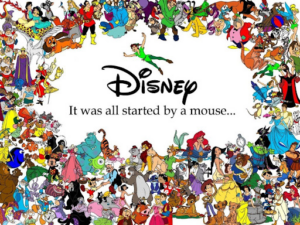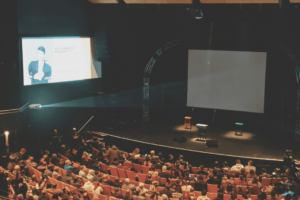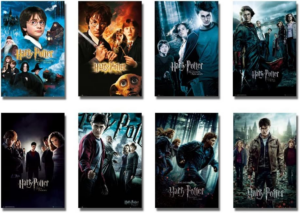Virtual production is a technique that combines physical and virtual filmmaking to create cutting-edge media. Teams design photorealistic sets using real-time 3D engines (game engines), rendered in real-time and projected on huge LED walls behind physical sets. The cameras are synchronized with the game engines for increased realism and depth of perspective. Visual effects are no longer simply added to a scene in post-production, thanks to virtual production. There are several benefits to using virtual production techniques for studios of all sizes. Discover the future of filmmaking with virtual production techniques.

Virtual production – The future of filmmaking
The recent pandemic has changed the overall style of filmmaking, with many artists and filmmakers finding scope in virtual production. One can add volumetric capture, performance capture, virtual camera outputs like master wheels, pan and tilt heads, and even the sensation of a handheld camera, all under “Virtual Production.” Game engines have enabled cinematographers to control lighting and showcase several lenses through drop-down menus. Before a frame is even filmed, VFX backgrounds are being created thanks to game engines and their unique method of manipulating polygons.

How is virtual production used?
Virtual production is a collaborative method that combines real-time technology with the offline (actors, props, etc.) and online (lighting, VFX, etc.) worlds of filmmaking. The various areas where Virtual Production is used are:
Video Games
Real-time technology, made famous by video games (using a game engine), was later taken in by the film industry and other sectors of the economy. Real-time video game artists now incorporate virtual production methods for the film industry. For instance, the virtual production division of Industrial Light and Magic’s motion capture technology, Technoprops, was used in games like Call of Duty- Advanced Warfare, Halo 4, and Far Cry.
Commercial fields
Commercial virtual production serves a variety of industries and uses. For example, commercial real-time 3D artists operate in broadcasting, architecture, engineering, and product design, to name a few, and use many cutting-edge techniques in virtual production. One instance is how the Weather Channel depicted Hurricane Florence’s effects by positioning the reporter in front of a green screen while digital visuals depicting the water surge levels were shown on viewers’ screens.
Movies
Real-time artists are necessary for both pre-and post-production and on-set production in film and television. Currently, only films with a larger budget can afford to use virtual production workflows during the filmmaking process (e.g., an LED stage Volume, motion capture, etc.). But even low-budget movies and TV shows can use one of the numerous accessible pre- and post-production techniques, like previs and postvis.
Steps followed in virtual production
There are a few steps with which the virtual production works in any of the productions. Below are the steps that are usually followed by making a video game or a movie or for any commercial use.
Pre-production
Pre-production is the stage when the concept or plot is born. Real-time 3D artists visualize the filmmakers’ creative intent by generating digital scenes known as pitchvis, which connect the story and tone of a production.
VAD – The virtual art department
This comes next to pre-production works. The virtual art department starts producing real-time materials for a movie, starting with initial 3D prototypes and finishing with camera-ready props, characters, and locations. This department assists in deciding which props and set pieces will be used in live action, which will be built digitally as part of the virtual world and presented on the Volume, and which will require post-production creation. To ensure the production’s priorities are met, principal photography and the VAD collaborate closely with previs artists and visual effects teams.
Visualization
It is the most known part for any filmmaker. Real-time 3D artists use a gaming engine to create digital artwork representing a filmmaker’s idea for a scene or a shot. There are various types of visualization in the virtual production workflow.
- Asset creation
- Virtual Scouting
- Previs
- Techvis
- Stuntvis
Principal Photography
Principal Photography is technically the production part. During the production stage, LED screens project your virtual worlds around the actors, accessories, and front-row set elements. The LED panels produce more lifelike lighting and reflections, reducing the need for elaborate lighting setups on location. The virtual scene behind the actor is then modified using camera tracking technology depending on the live-action cameras, producing parallax.
Post-production
Post-production is the stage where the VFX artists create and get things to the final stage. Another visualization technique used in post-production is called postvis, which frequently combines live-action video with primary visual effects. Although similar to previs, it is utilized more for editorial purposes after filming is complete as shot placeholders for a polished version. Also, it is used to inform VFX teams of the timings, staging, etc., for a complete or incomplete CG shot.
The Final Version
Lastly, the final version is the last stage of the workflow, where all the parts by various terms are complete and ready to be delivered for the audience to enjoy.
What is the benefit of virtual production?
Presently, virtual production is a crucial and expanding component of the creation of movies and TV shows. Filmmakers’ desire to view visual effects immediately rather than waiting for post-production has contributed to the explosive growth of virtual production. Virtual production has several benefits that enable studios to construct larger structures, innovate more, and provide high-quality outcomes in the production cycle.
Saves time and cost
Virtual production reduces costs and saves time for many studios. Travel time and additional costs can be reduced by virtual scouting, which involves building virtual representations of suggested sets. It’s easier to make decisions while actors are on set when creative decisions and modifications are made earlier. Less rework and cleaner takes are the final results. At the Post-production stage, it also saves a tonne of time and money.
LED screens
Less work is needed on-site and in post-production since the LED panels control lighting on the Volume stage rather than by heavy on-set lighting. This helps to better blend real action with the virtual world.
 Digitalization
Digitalization
Digital set and scene creation replace the need for on-location filming and elaborate setups. Virtual sets not only assist in preserving continuity and save time and money, but they also make pick-ups and reshoots simple.
Encourages performances
Actors can react to their surroundings as if they were real when they perform in front of an LED screen that shows a whole virtual universe since they are immersed in that reality. Further benefits include the capacity for actors to respond instinctively rather than by what they have been told will happen on the set and natural sightlines to objects, scenery, and happenings within the set.
Real-time results
Directors and actors can see what they are doing playing back in real-time and make adjustments as they go by mixing LED, camera tracking technology, and real-time render engines. The ability to get it right on the spot means creators can finally need not work again later to fix the flaws.
Liberty and flexibility
Virtual production teams can use pre-built assets from existing libraries. Without starting from scratch, they can be readily altered to suit the requirements of every production. Thanks to electronic storage, these virtual assets, transportation, labor, and physical storage expenses are decreased.
Increased visibility
Everyone may have a more thorough understanding of the movie thanks to virtual production, from previs through the post. One can view the explicit content they are recording with the help of virtual cameras and green screen compositing. Filmmakers and actors may see the set they are on through their eyes and in the camera with the assistance of LED walls.
What virtual production does over traditional filmmaking?
With real-time teams, the virtual production approach is more flexible, with more VFX and asset creation happening before and during the main shot. Early in filmmaking, virtual production offers greater creative freedom and results in a far higher quality finished product. In addition, more flexibility and opportunity are made possible by its non-linear, collaborative steps.
What do VFX Studios need for a virtual production?
- Virtual production requires real-time 3D engines and game engines. Teams in media and entertainment build photorealistic virtual worlds and characters to be shown on LED walls on set in real time. These tools include Unreal Engine and Unity. Apple phones and pads’ LiDAR sensors help capture in-engine camera movements.
- Camera Rigs are required to add accessories such as the VR trackers. Further, a capture card will allow you to stream live footage to the computer.
- Several digital assets must be created during virtual production. These binary art files are frequently enormous, which makes them challenging to manage. Version control systems like Helix Core can help with it. However, many creative teams also use digital asset management (DAM), making managing all their creative digital files easier. However, many of these technologies only keep the most recent file version, making it difficult for the team to locate or return to a previous version. Camera tracking technologies such as VR headsets and trackers relative to the LED walls.
- The production teams can quickly access the virtual production assets they require by switching to a hybrid or cloud model. Depending on where teams are located, cloud data centers are readily available anywhere and may be swiftly spun up.
What are the career opportunities in virtual production?
In virtual production, you can work as a real-time 3D artist for the film, video game, or commercial industries. A real-time 3D artist in the film industry has various job options, which include:
- LED Wall cinematographer
- Virtual production supervisor
- Visualization artist
- Live compositing artist
- Real-time technical artist.
Virtual production market size
The worldwide market for virtual production is forecasted to reach a valuation of USD 6.79 billion by 2030, exhibiting a compound annual growth rate (CAGR) of 17.8% between 2022 and 2030. In 2021, the market for virtual production was estimated to be worth USD 2.54 billion. Market analysts predict it will increase by 14.1% CAGR from 2022 to 2029, from USD 2.86 billion to USD 7.19 billion.
Videos
Virtual Production : Bringing Creators’ Visions to Life
The Wall: Case Study — CJ ENM Virtual Production Stage | Samsung
Behind the Scenes with UE4’s Next-Gen Virtual Production Tools | Project Spotlight | Unreal Engine
Building a Virtual Production AR Wall for Unreal using a 4K Projector
Get Started with Virtual Production Today: 2 Easy Ways
















